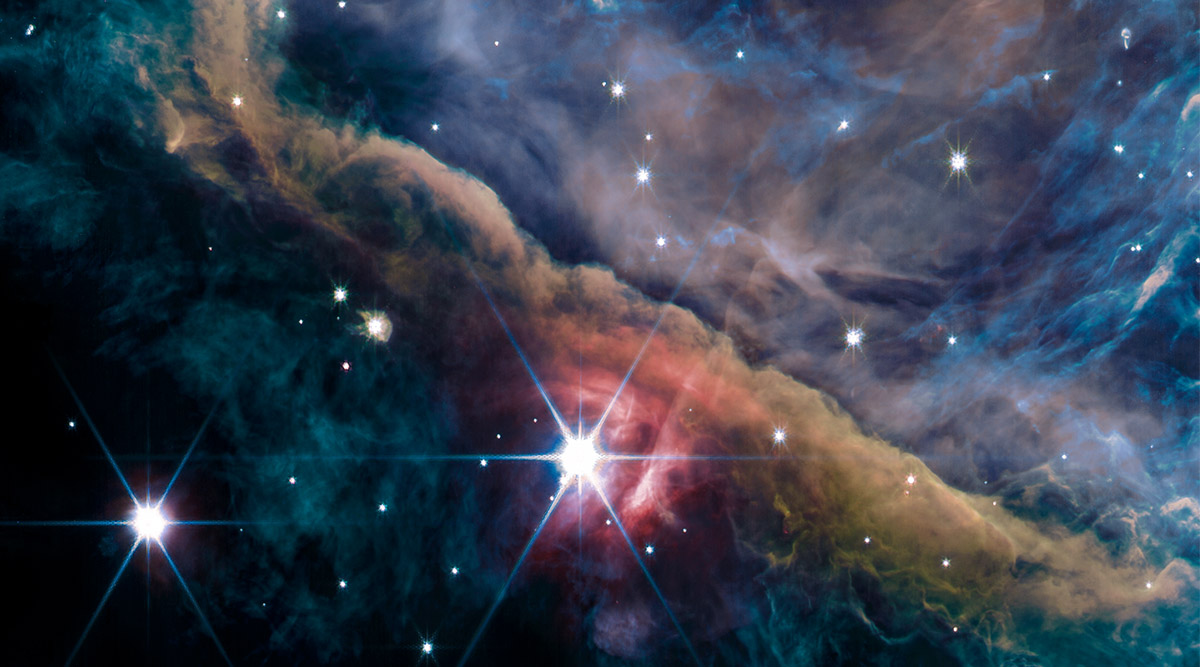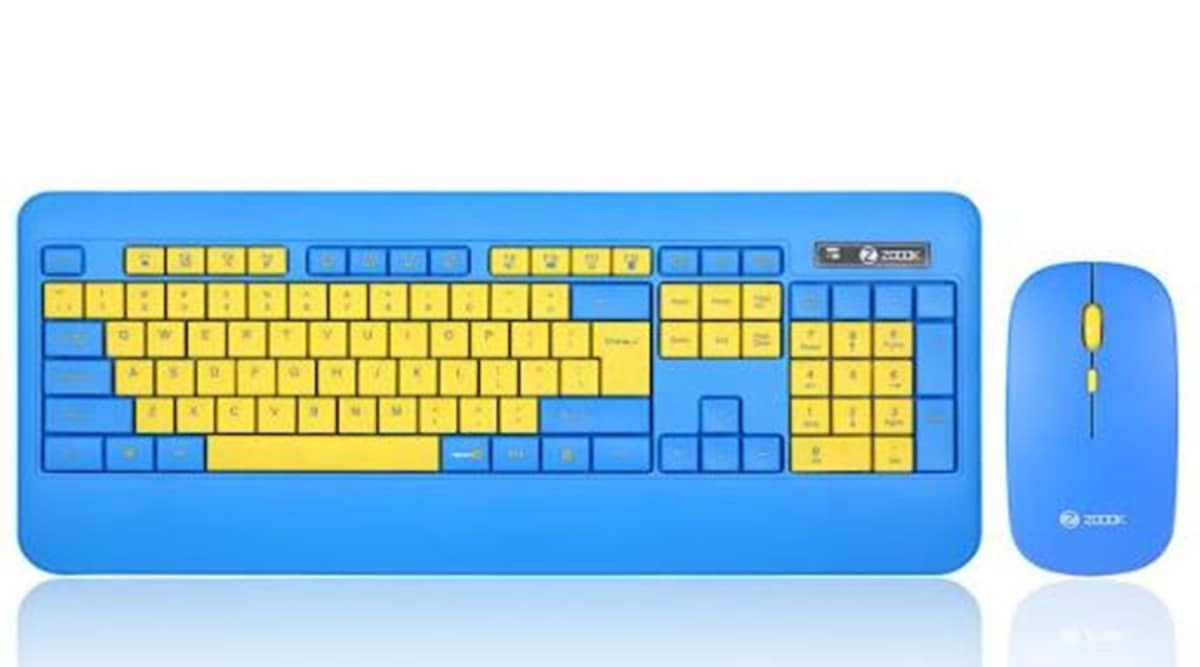James Webb Space Telescope captured this image of the Orion nebula young stars cocooned by disks of gas and dust. The image is actually a composite of several filters which represent emissions from ionised gas, hydrocarbons, molecular gas, dust and scattered starlight. It was released by the PDSRs4ALL international team of astronomers.
 The full image shared by PDRs4ALL. (Image credit: NASA, ESA, CSA, PDRs4ALL ERS team)
The full image shared by PDRs4ALL. (Image credit: NASA, ESA, CSA, PDRs4ALL ERS team)
The most prominent feature of the image is the Orion Bar, which is the dense wall of gas and dust that goes from the top left of the image to its bottom right. At the top right of the image is the Trapezium Cluster, a group of young stars that are very hot and massive. The ultraviolet radiation emitted by this cluster creates a hot ionised environment that is slowly eroding the Orion bar away.
The Orion bar offers an environment that shields the molecules and dust within it but the stellar energy from the stars is sculpting a region that is rich with filaments, globules and young stars. In fact, the entire image is scattered with filaments of different shapes and sizes. The inset image below shows filaments that are rich in hydrocarbon molecules and molecular hydrogen.

 Annotated version of the image provided by PDRs4ALL. (Image credit: NASA, ESA, CSA, PDRs4ALL ERS team)
Annotated version of the image provided by PDRs4ALL. (Image credit: NASA, ESA, CSA, PDRs4ALL ERS team)
Another interesting feature is the young star with a disk inside its cocoon towards the top-left of the image. These planet-forming disks are being dissipated due to the strong radiation field of the stars in the nearby Trapezium filter, creating a cocoon of dust and gas around them. Almost 180 such “illuminated photoevaporating disks” have been discovered in the Orion Nebula and this one, called HST-10, is the largest known. The inset image has the orbit of Neptune shown in scale for comparison.

 Comparison of the images of the Orion Nebula captured by Hubble and JWST respectively. (Image credit: NASA, ESA, CSA, PDRs4ALL ERS team)
Comparison of the images of the Orion Nebula captured by Hubble and JWST respectively. (Image credit: NASA, ESA, CSA, PDRs4ALL ERS team)
θ2 Orionis A, the brightest star in this image, can be seen towards the centre of the bottom part of the image. It is a star that is just bright enough to be seen with the naked eye from dark locations on Earth. The red glow in the immediate surroundings of θ2 Orionis A is caused by the star’s light reflecting off dust grains.
!function(f,b,e,v,n,t,s)
{if(f.fbq)return;n=f.fbq=function(){n.callMethod?
n.callMethod.apply(n,arguments):n.queue.push(arguments)};
if(!f._fbq)f._fbq=n;n.push=n;n.loaded=!0;n.version=’2.0′;
n.queue=[];t=b.createElement(e);t.async=!0;
t.src=v;s=b.getElementsByTagName(e)[0];
s.parentNode.insertBefore(t,s)}(window, document,’script’,
‘https://connect.facebook.net/en_US/fbevents.js’);
fbq(‘init’, ‘444470064056909’);
fbq(‘track’, ‘PageView’);







